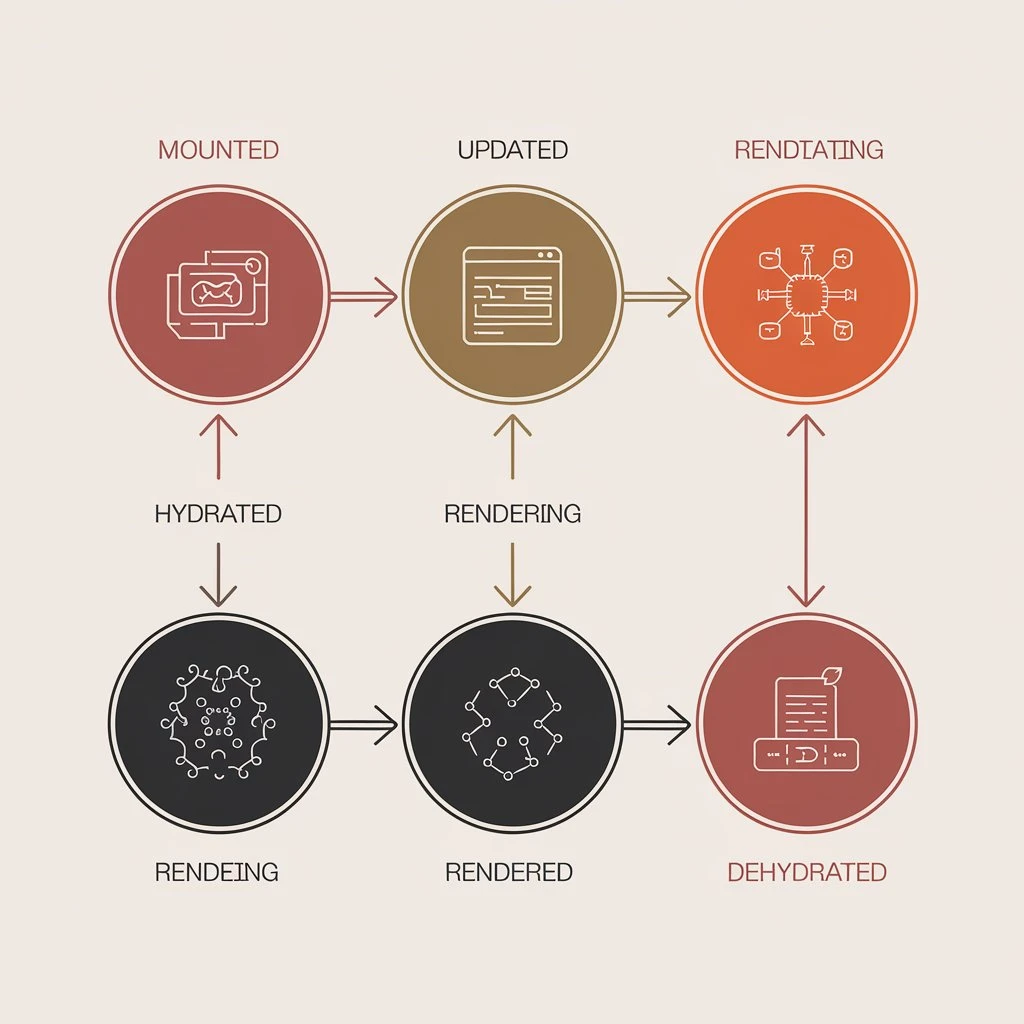- 6 months ago
- 6 min read
Understanding Lifecycle Hooks in Laravel Livewire

Lifecycle hooks are methods that get triggered during specific phases of a Livewire component’s lifecycle. Every Livewire component has a lifecycle, starting from the moment it is instantiated until it is rendered, updated, or destroyed. During each phase, certain methods (hooks) are automatically called, allowing you to perform custom logic.
These hooks provide you with the ability to interact with your components at key moments, such as when a component is mounting, updating, or removing itself from the DOM.
Key Lifecycle Hooks in Livewire
Livewire provides several built-in lifecycle hooks that can be used to interact with components at various stages. Let's explore the most commonly used ones:
1. mount Hook
The mount method is one of the most important hooks in Livewire. It is called when a component is first instantiated and rendered. This is where you initialize properties or load any data that your component needs when it is first rendered.
Usage:
public function mount() { // Initialization logic $this->message = 'Hello, World!'; }
If your component requires data when it is first loaded, the mount hook is the perfect place to fetch or set it.
2. render Hook
The render method is another essential hook. It is responsible for returning the view that should be rendered for the component. Unlike other hooks, this method is required in every Livewire component.
Usage:
public function render() { return view('livewire.example-component'); }
This hook is automatically called during the initial page load and every time the component re-renders.
3. updated Hook
The updated hook is called whenever a property within the component is updated. This hook is useful when you need to perform an action as soon as a specific piece of data changes.
Usage:
public function updated($propertyName) { // Logic when any property is updated $this->validateOnly($propertyName); }
There is also a more targeted hook:
public function updatedMessage() { // Logic specific to when the 'message' property is updated }
This allows you to react to individual property updates.
4. updating Hook
Similar to the updated hook, the updating hook is triggered before a property is updated. This is useful when you want to perform validation or logic before the change is committed.
Usage:
public function updating($propertyName) { // Logic before any property is updated }
You can also target a specific property:
public function updatingMessage() { // Logic before 'message' is updated }
5. hydrate Hook
The hydrate method is called every time a component is re-rendered, including the initial load. This hook is useful for resetting component properties or performing actions before the component is hydrated with fresh data.
Usage:
public function hydrate() { // Actions to take each time the component is hydrated }
6. dehydrate Hook
The dehydrate method is triggered when a Livewire component is about to be re-rendered. This can be useful if you want to reset any state or clean up data before it gets sent to the front-end.
Usage:
public function dehydrate() { // Logic before the component is re-rendered }
7. destroy Hook
The destroy method is triggered when the component is being destroyed, for example, when it is being removed from the DOM. This hook allows you to perform any cleanup actions, such as removing event listeners or other resources that should no longer be in use.
Usage:
public function destroy() { // Cleanup logic when the component is destroyed }
8. boot Hook
The boot method is called once the component is instantiated but before the mount method is executed. This is useful when you need to perform setup logic that should run before the component is fully mounted.
Usage:
public function boot() { // Logic before the component is mounted }
Lifecycle Flow
Understanding the lifecycle flow of a Livewire component helps clarify when each hook is triggered. Here is a typical lifecycle sequence:
- Component Initialization (boot)
- Component Mounting (mount)
- Rendering (render)
- Hydrating (hydrate)
- Updating (updating and updated)
- Re-rendering (render)
- Dehydrating (dehydrate)
- Destroying (destroy)
Practical Use Cases of Lifecycle Hooks
Form Validation Before Submission
You can use the updating hook to validate a form field before it is submitted. This can prevent invalid data from being sent to the server.
public function updating($propertyName) { $this->validateOnly($propertyName, [ 'name' => 'required|min:5', 'email' => 'required|email', ]); }
Fetching Data When the Component Mounts
The mount method is perfect for fetching data when a component is first loaded:
public function mount() { $this->posts = Post::all(); }
Cleaning Up Resources on Component Destruction
You can use the destroy hook to clean up resources, such as stopping event listeners or timers, when the component is removed from the DOM.
public function destroy() { Cache::forget('posts_cache_key'); }
Best Practices for Lifecycle Hooks
- Use Hooks When Necessary: Only use lifecycle hooks when necessary, as excessive use may lead to performance issues.
- Organize Hooks Logically: Group your hooks logically within your component to ensure readability.
- Avoid Heavy Operations: Avoid placing resource-heavy operations (e.g., complex queries) inside frequently triggered hooks, like render or hydrate, as they could slow down your application.
Conclusion
Lifecycle hooks in Livewire offer powerful tools to manage the behavior of components throughout their lifecycle. Whether it’s initializing data when the component is first loaded, updating properties dynamically, or cleaning up when a component is destroyed, these hooks give you complete control over how your Livewire components behave. By understanding and effectively using these hooks, you can create more dynamic and interactive applications that provide a smooth, user-friendly experience.